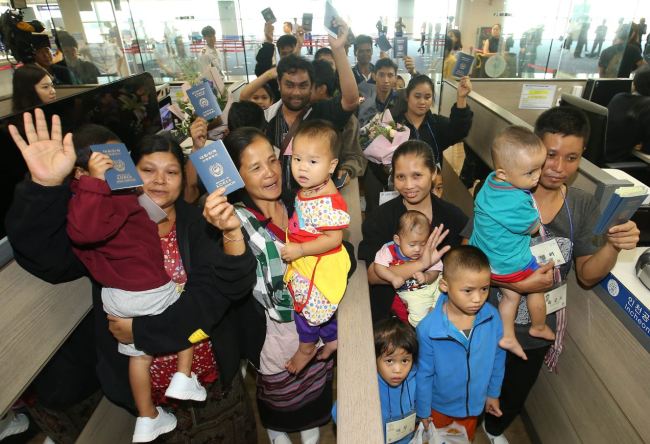What’s the Purpose of Refugee Resettlement?
 |
| Loren Elliott/Reuters |
Almost lost amid the latest Eastern European hoopla was the administration’s announcement of the refugee-resettlement ceiling for the coming fiscal year, which starts next week. The current year’s ceiling is 30,000, down from 45,000 in 2018, and the newly announced 2020 ceiling will be lower still at 18,000. This is the lowest ceiling since the current resettlement system was set up by the Refugee Act of 1980.
While the number of refugees to be resettled from abroad is the lowest in 40 years, the number of people showing up at our borders demanding refugee status (via asylum applications) has ballooned, with the administration estimating a record-high number of 350,000 asylum claims in the coming fiscal year. The only difference between refugees and asylees is that we affirmatively choose and relocate the former, while the latter show up unbidden and demand to be admitted. DHS has been arguing for some time now that the burden of an increasing number of asylum claims be offset by reductions in refugee admissions; in fact, if and when the legislature decides to get around to legislating, we might consider systemically linking the two elements of humanitarian immigration such that when asylum claims rise, refugee resettlement numbers drop, and vice versa.
Though many, including Jay this morning, lament this reduction, the question we need to ask before setting a number is: What’s the purpose of refugee resettlement, and refugee protection more generally? If we resettle refugees for purely humanitarian reasons — taxpayer-funded charity work — then large-scale refugee resettlement is morally wrong. Because of extremely high welfare use by refugees (who don’t face the same restrictions on welfare use as immigrants who came via other pathways), the Department of Health and Human Services spent $96 billion on refugees over 10 years, from 2005 to 2014; states and localities bear very large additional costs. The refugees themselves haven’t done anything wrong here; it’s the resettlement contractors (Church World Service, the Roman Catholic bishops’ conference et al.) who are paid by the State Department to sign them up for welfare. But that money could have helped 12 times as many refugees abroad. So from a humanitarian perspective, large-scale refugee resettlement is an act of virtue-signalling, lavishing taxpayer funds on a relative handful of people, at the expense of many more left behind who are indistinguishable from the lucky winners, in order that we enjoy the warm glow of righteousness. The proposed 18,000 cap would actually be more than sufficient for those refugees who have an “emergency” or “urgent” need for resettlement, according to the UN itself.
Read the rest from Mark Krikorian HERE.







Comments are closed.